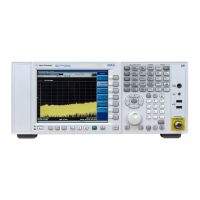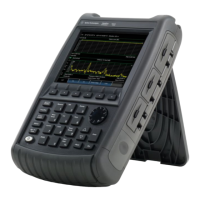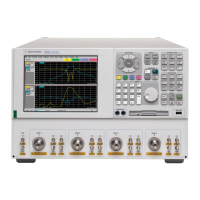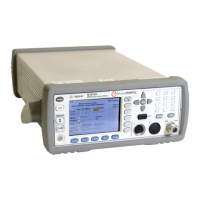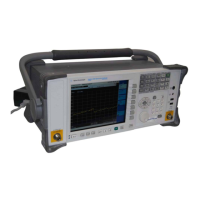3 Functions and Measurements
34 N9342C/43C/44C User’s Guide
Resolving Signals of Equal Amplitude
In this example a decrease in resolution bandwidth
is used in combination with a decrease in video
bandwidth to resolve two signals of equal
amplitude with a frequency separation of 100 kHz.
Notice that the final RBW selected is the same
width as the signal separation, while the VBW is
slightly narrower than the RBW.
1 Connect two sources to the analyzer input as
shown below.
Figure 3-3
Frequency
Enter
7
MOD
On/Off
RF
4
1
0
2
9
6
3
On/Off
Amplitude FM
Utility
LF Out
Preset
Local
AM I/Q
File
Trigger
PulseM
·
Sweep
8
5
Remote
Standby
On
N9310A RF Signal Genera tor 9 kHz - 3.0 GH z
REVERSE PWR
4W MAX 30 VDC
LF OUT RF OU T 50
FUNCTI ON S
Frequency
Enter
7
MOD
On/Off
RF
4
1
0
2
9
6
3
On/Off
Amplitude FM
Utility
LF Out
Preset
Local
AM I/Q
File
TriggerPul seM
·
Sweep
8
5
Remote
Standby
On
N9310A RF Signal Generator 9 kHz - 3.0 GHz
REVERSE PWR
4W MAX 30VDC
LF OUT RF OUT 50
FUNCTI ON S
Directional
coupler
Signal generator
Signal generator
Setup for obtaining two signals
2 Set on
e source to 300 MHz. Set the frequency of
the other source to 300.1 MHz. Set both source
amplitudes to –20 dBm.
3 Setup the analyzer to view the signals:
• Press [PRESET]
• Press [FREQ] > 300.05 > {MHz}
• Press [SPAN] > 2 > {MHz}
• Press [BW] > 30 > {kHz}
Use the knob or the arrow keys to further reduce
the resolution bandwidth and better resolve the
signals.
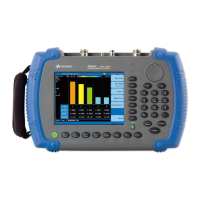
